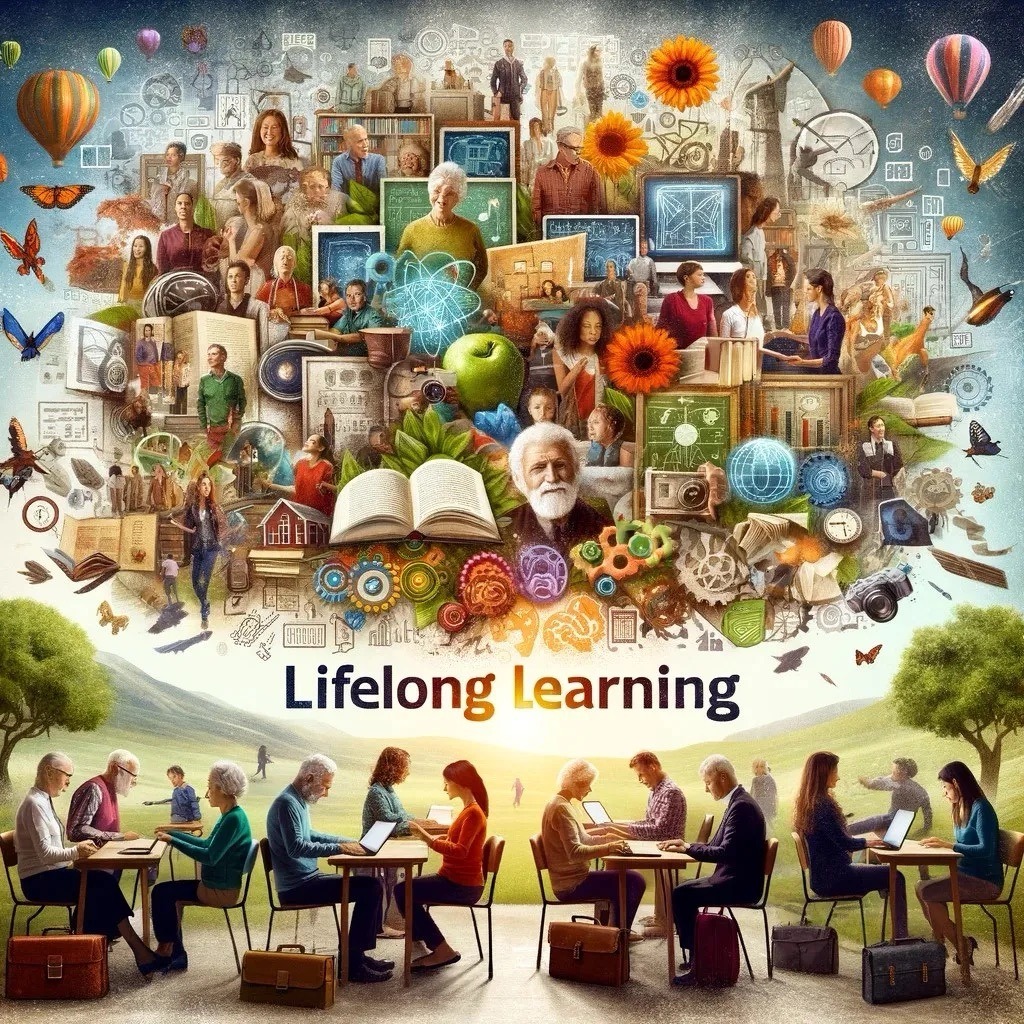In this final installment of our exploration of the transformative learning trends of 2024, we delve into the essence of lifelong learning — a philosophy that transcends traditional education models to endorse a perpetual journey of personal and professional growth. This concept does not view education as merely a preparatory stage in life, advocating instead for a continuous, integrated approach to skill and knowledge development. It underscores the importance of adaptability and resilience in a rapidly evolving world, where the capacity to learn and evolve is indispensable for success.
Lifelong learning is not just about accumulating knowledge. It’s about fostering insatiable curiosity and a persistent drive to expand one’s horizons. This trend signifies a critical shift towards recognizing learning as a lifelong endeavor, integral to navigating the complexities of the modern career landscape. It emphasizes the continuous development of both hard and soft skills, ensuring individuals remain agile and relevant in an unpredictable job market. By integrating learning into the fabric of daily life, we create a culture where growth is not just encouraged but celebrated, paving the way for sustained personal and professional fulfillment.

Lifelong Learning as a Mindset
The adoption of a lifelong learning mindset represents a comprehensive approach to both personal and professional development. My own experiences, from the rigorous pursuit of an MBA to the challenges of learning German, underscore the profound impact of embracing continuous learning. It’s a testament to the idea that education doesn’t end with a diploma. It’s a lifelong journey of growth that enriches every facet of our lives. This mindset is crucial in today’s ever-changing environment, offering a solid foundation for success and satisfaction in both our careers and personal lives.
Moreover, this commitment to lifelong learning fosters resilience and adaptability, traits that are increasingly vital in the face of rapid technological and societal changes. By viewing learning as an ongoing process, we equip ourselves with the tools necessary to navigate the future, transforming obstacles into opportunities for growth. It’s a strategy that not only enhances our ability to keep pace with change but also positions us to lead and innovate, shaping the trajectory of our industries and communities.
The Role of Technology in Lifelong Learning
Advancements in digital technology have fundamentally transformed the landscape of lifelong learning, making it more accessible, engaging, and customized than ever before. Platforms leveraging artificial intelligence and interactive media offer personalized learning experiences that cater to individual needs, preferences, and schedules. This democratization of education allows for a level of personalization and accessibility previously unattainable, enabling learners to engage with content that resonates with their unique learning paths and career goals.
Get More Brain stands at the forefront of this revolution, embodying the principles of lifelong learning through its innovative platform. By providing a diverse array of resources and employing AI to tailor learning experiences, Get More Brain exemplifies how technology can foster a lifelong learning culture. These digital tools empower individuals to pursue their learning goals with unprecedented flexibility, ensuring that regardless of their career stage or physical location, they have the opportunity to grow and evolve continuously.
Cultivating a Culture of Continuous Growth
Fostering a culture of lifelong learning in the workplace creates a dynamic, innovative, and adaptable organizational environment. Employees committed to ongoing skill development not only enhance their personal career trajectories but also contribute significantly to their organization’s competitive edge. This culture of continuous improvement encourages a proactive approach to learning, where employees are motivated to explore new ideas, embrace change, and drive innovation.
Organizations that prioritize lifelong learning recognize its critical role in sustaining long-term growth and resilience. By investing in the continuous development of their workforce, they cultivate fertile ground for creativity, collaboration, and agility. This commitment to nurturing talent underscores a forward-thinking mindset, where the growth of individuals is inextricably linked to the success and sustainability of the business as a whole.
Conclusion and Call to Action
As we close this series on the learning trends of 2024, the journey toward embracing lifelong learning emerges as a pivotal theme. It’s a movement that champions ongoing personal and professional evolution as the cornerstone of success in an ever-changing world. This commitment to continuous learning is what will define the leaders of tomorrow, ensuring they are not only prepared for the challenges ahead but are also active participants in shaping the future.
I encourage you to ponder your relationship with lifelong learning. Whether through formal education, like my MBA pursuit, or personal challenges, such as learning a new language, how are you integrating continuous learning into your life? Share your story on Medium or LinkedIn, and let’s continue the conversation on how we can foster a lifelong learning mindset within our communities and organizations, paving the way for a future where growth and learning are integral to our everyday lives.
This post was first published on Medium.



